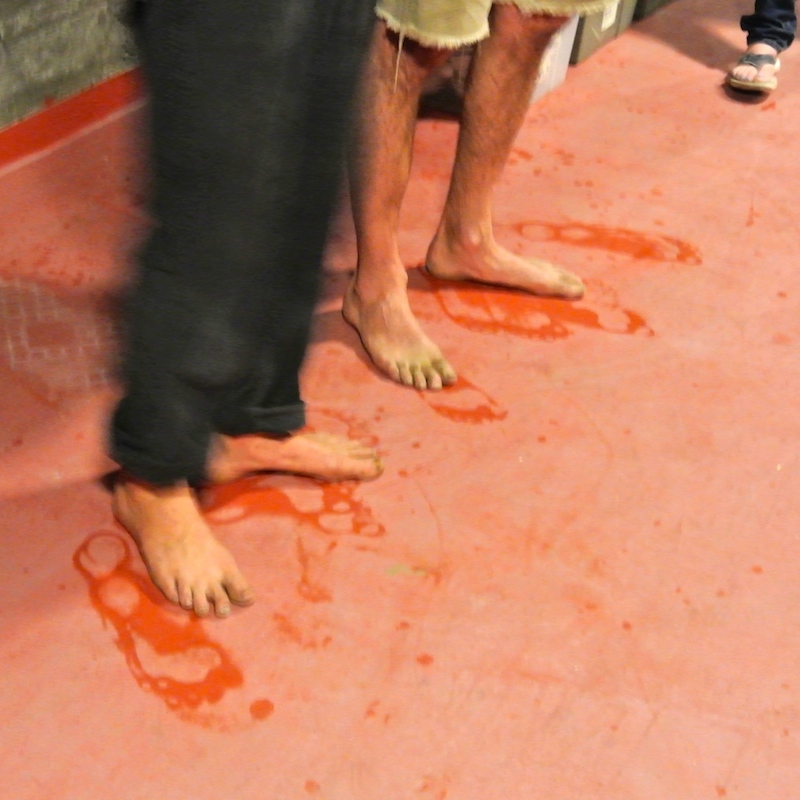
One of the lasting visuals (among many) from a boozy sweep through Vermont recently was the sight of brothers Chris and Jon Piana holding court in the chilly, cement floor barrel cellar of their new Fable Farm cidery (or fermentory, as they call it), both barefoot and fancy free; plaid was in ample supply, ball caps a prerequisite.
These young bearded guys — part mountain men, part surfer dudes — are the epitome of the craft-focused, small-batch, unique drinks and culinary scene emerging in the second smallest state (population 620,000) in the U.S.
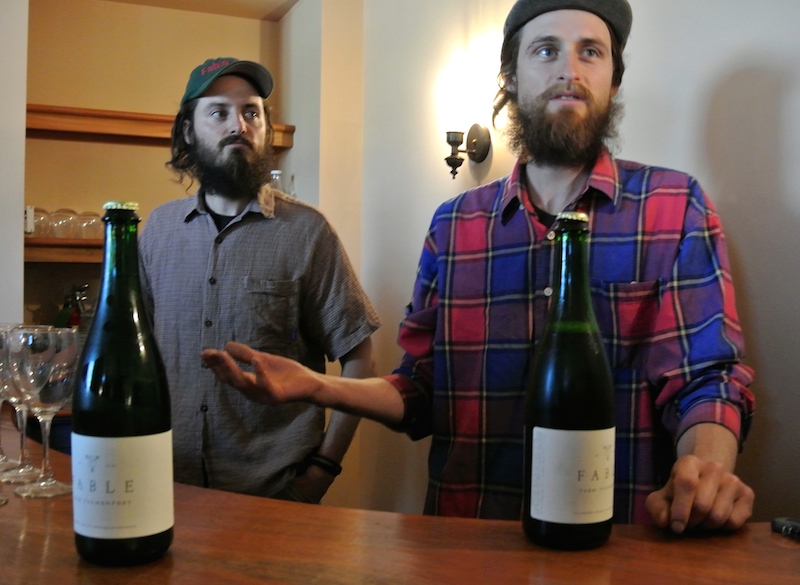
They walk the walk (barefoot no less!) and talk the talk of a cider/beer/distillates/wine industry that has it all working in four-part harmony. They are stronger with all the elements entwined and focused on the real prize — offering a diverse and complete “VERMONT” experience for consumers. It’s a symbiotic relationship, an understanding that shared ideas and methods of creating their products — like what works and what doesn’t work — lifts the entire community. They feed off one another.
It was refreshing to see a community working hard to create something delicious and exhilarating that once you have seen it and tasted it first-hand you want to immediately go back and immerse yourself completely in its goodness.
About 35 bloggers from the U.S. and Canada were there for a three-day “TasteCamp” (see #tastecamp #VT thread on Twitter) swarming at the beginning of June. It was an intense exploration of all things booze and food crammed into very little time.
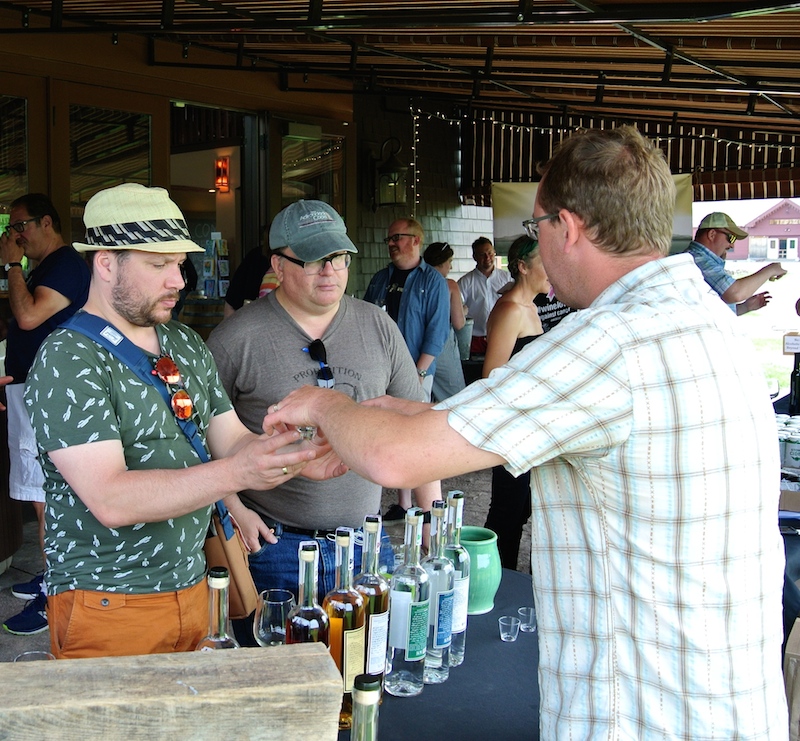
TasteCamp, started by New York Cork Report founder Lenn Thompson, is a yearly regional wine immersion event for writers and bloggers. What’s unique about it is the fact that it’s an independent bloggers event that is paid for by the participants and not considered a junket. However, there are sponsors who help pay for things like the Saturday touring bus, some of the food and other odds and ends, but travel and accommodations are up to the writers. We generally travel to new and emerging regions.
Vermont, which is legendary for its maple syrup, is a New England state that borders Massachusetts to the south, New Hampshire to the east, New York to the west and Quebec to the north. It is carpeted in a vast green canopy of forest, leaving only about 25% of the state not forested.
We based ourselves in Waterbury, a quaint town that punches outside its weight class in terms of cool places to eat and drink. From there, nothing is particularly close to anything else in terms of quick and easy traditional wine trails that you see in other wine regions. But that is part of the charm of Vermont; lovely picturesque drives surrounded by green-covered mountains, rivers, lakes and gorgeous little towns that are irresistible.
This is not a complete story on the wine, cider, distillates, beer and food of Vermont, that will come in magazine stories I have been commissioned to write. What follows is a snapshot — blog style — of Vermont’s deliciousness.
Day One (lost in Vermont)
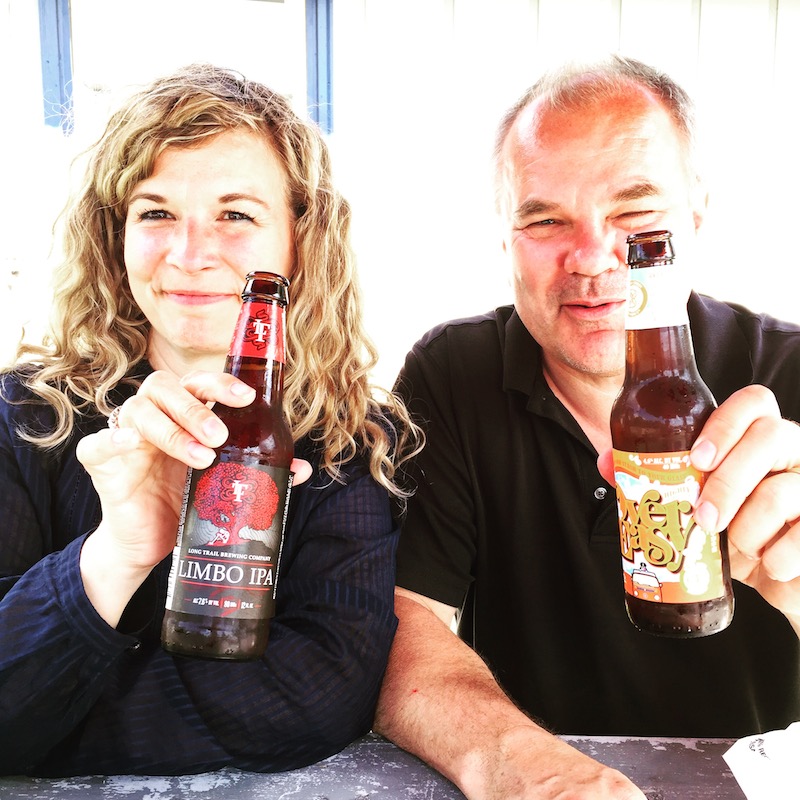
From the hotel in Waterbury, we decided it was best to carpool. Canadian friends (above) Shawn McCormick (@uncorkontario) and wife Debbie White (@oneholisticgirl) jumped into my SUV and we headed out. With Shawn navigating and me driving, we headed to la garagista Farm and Winery on Mount Hunger at the edge of the Chateauguay and in the Piedmont chain of hills in Barnard.
Our GPS took us to Mount Hunger Road and up a series of steep dirt roads with not a winery in sight. Up and down we drove and “master” navigator McCormick finally admitted he could have given us the wrong address to punch into the nav system. A stressful hour or so later, and numerous tweets and phone calls to TasteCamp co-organizer Remy Charest, interrupted by spotty cell reception, we reached our destination just in time for our very first (very quick) sip of Vermont wine and, sadly, the drive to our next destination. Who knew there are so many Mount Hunger roads and Old Mount Hunger roads in one state!
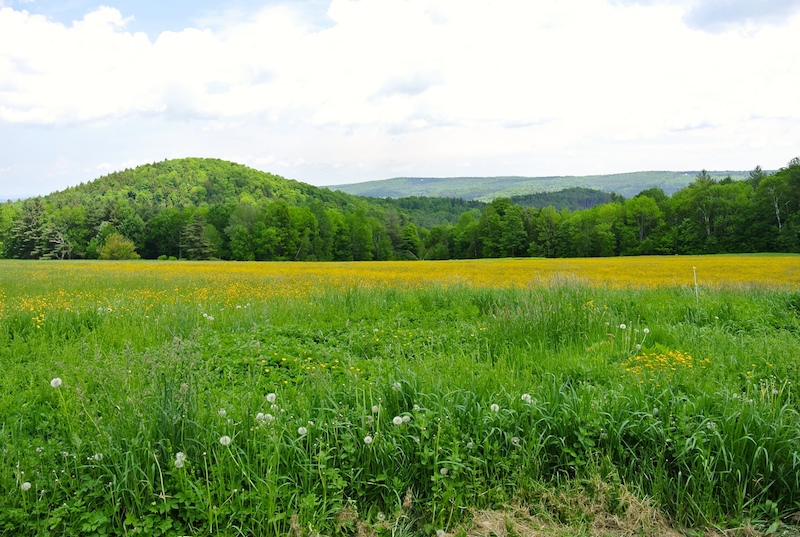
La garagista grows natural alpine grapes for wine (all hardy Minnesota-developed hybrids that withstand the brutally cold winters of Vermont that would kill vinifera each every season) and cider apples.
There’s this, from the website (because we missed everything aside from tasting a couple of wines):
“Our land has been part of small homestead farming for over 200 years. On the farm, we attend to the care and observation of our native terroir, a whole-farm and diverse agriculture where we are not only growing wine, but also vegetables, fruits, flowers, and herbs for our restaurant kitchen at osteria pane e salute.
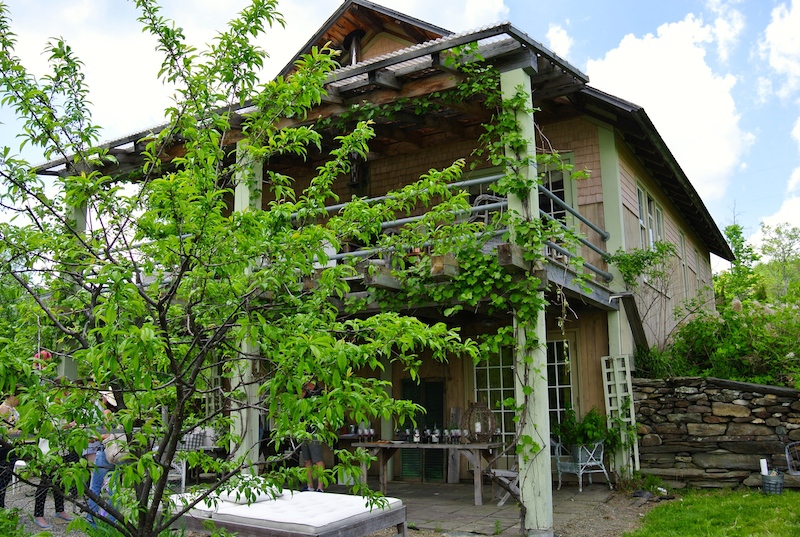
“In 2014, our small farm has grown, encompassing two older parcels of vineyard in the Champlain Valley of Vermont and has allowed us to extend our farming efforts in a valley landscape. The work we do at the farm and winery, both in the field and in the cellar, is guided by organic, permaculture, and biodynamic thought. We try to let all elements of the farm speak for themselves accompanied by our stewardship.
“Our mission is to care for our land in creative and natural ways, make way for the honest narrative told by the wines and ciders that express our unique landscape and each vintage year, and share in and support the spirited food and agriculture of our community.”
The grapes grown at the estate include a selection of red and white cold-hardy vines that suit the terrain: La Crescent, Marquette, Frontenac Gris, Frontenac Blanc, and Frontenac, as well as Brianna and St. Croix. In the home farm vineyard there’s a bit of Riesling and Blaufrankisch.
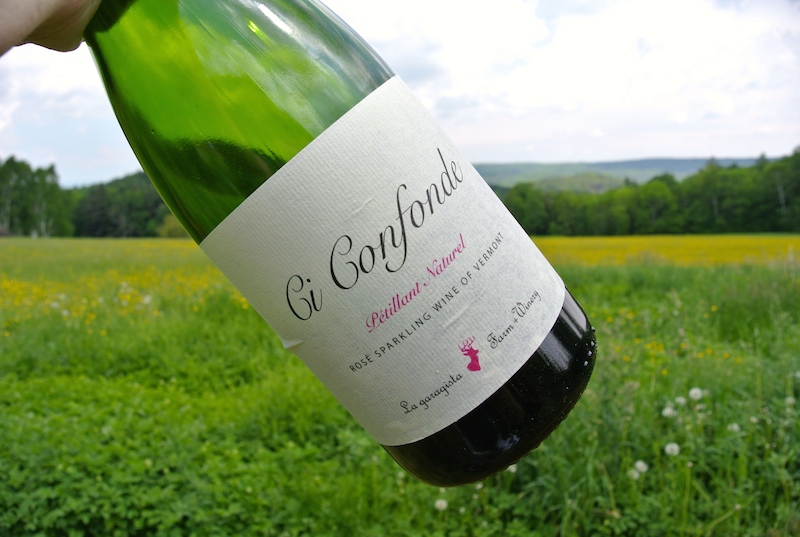
The Ci Confonde petillant naturel White 2014 was a highlight for me from the few wines I tasted, so fresh and vibrant, with floral notes, minerality and citrus.
I love some of the wine names: Damejeanne, Harlots and Ruffians white field blend, Loups Garoux, Lupo in Bocca rose field blend and Grace & Favour white still.
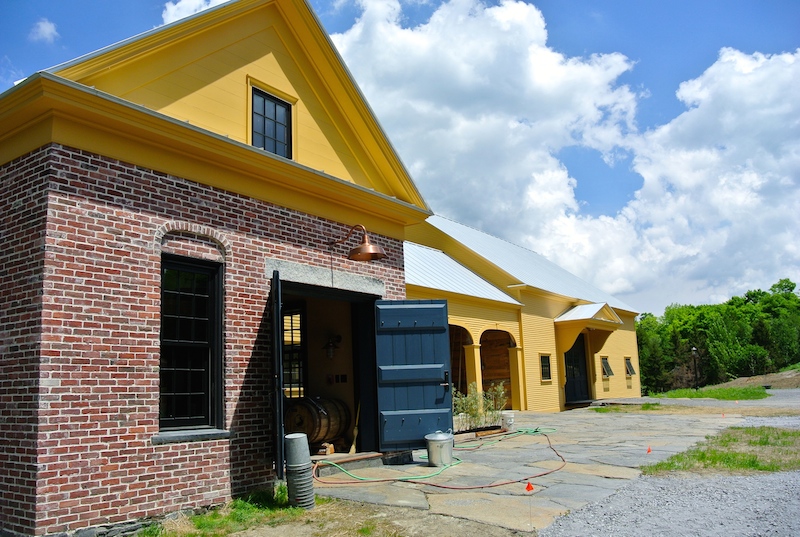
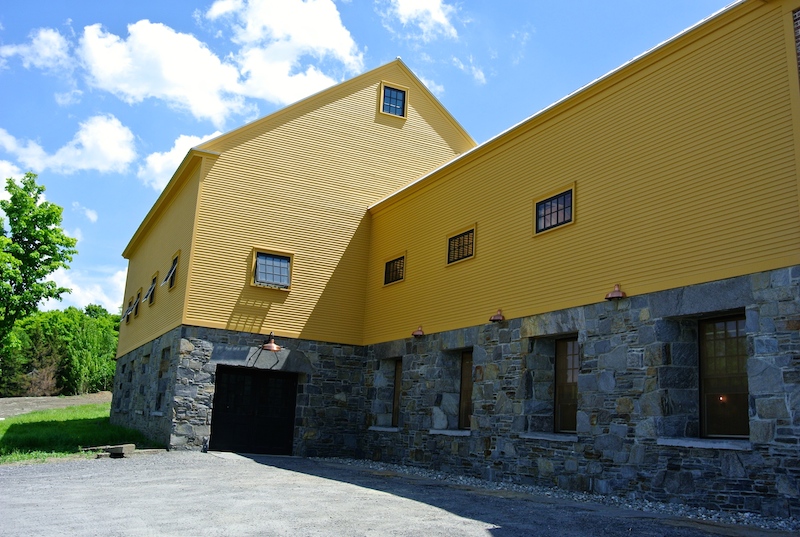
Then it was off to the Fable Farm Fermentory, where the first person we ran into was Jon Piana, barefoot and walking effortlessly on the rough, crushed stone driveway. We would run into the brothers a few times on this trip and I can honestly say that I don’t think they own a pair of shoes between them.
Their quirkiness is reflected in all that they do. Their mission statement:
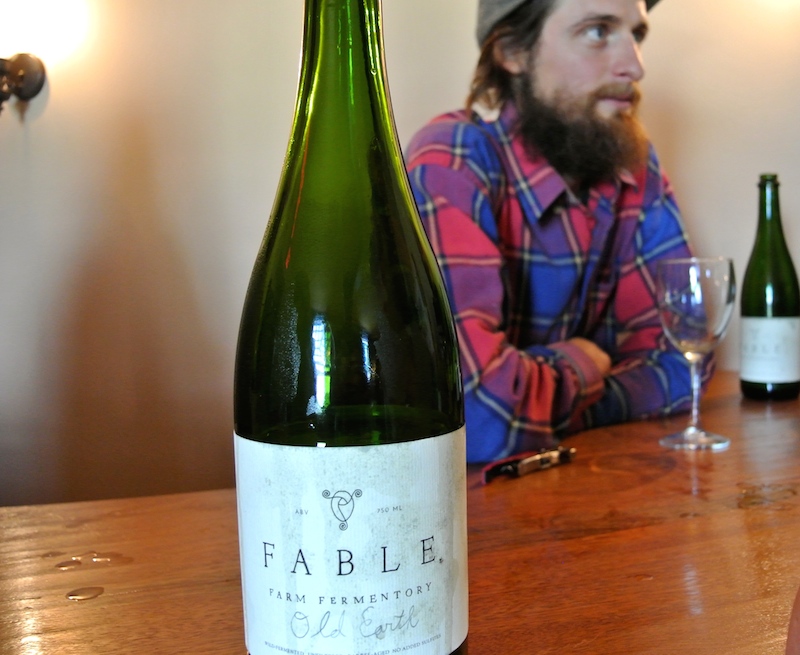
“As farmers, we cultivate landscape as it is our body; as Earth is Gaia, our farm too becomes a single organism made up of fractaled life forms and repeating geometry.”
I honestly don’t know what the hell that means. The only reference for the word fractaled I found was in the urban dictionary:
Fractaled: Majorly screwed up.
— Last night I got fractaled! All that whiskey & weed, whew!
But I digress, the fact is the Piana brothers are making some of the most fascinating and interesting ciders I have tasted. They are exploring the outer reaches of creativity by taking the wine process and melding it to the anything-goes craft beer industry to offer exciting, natural, refreshing, pure ciders of immense character.
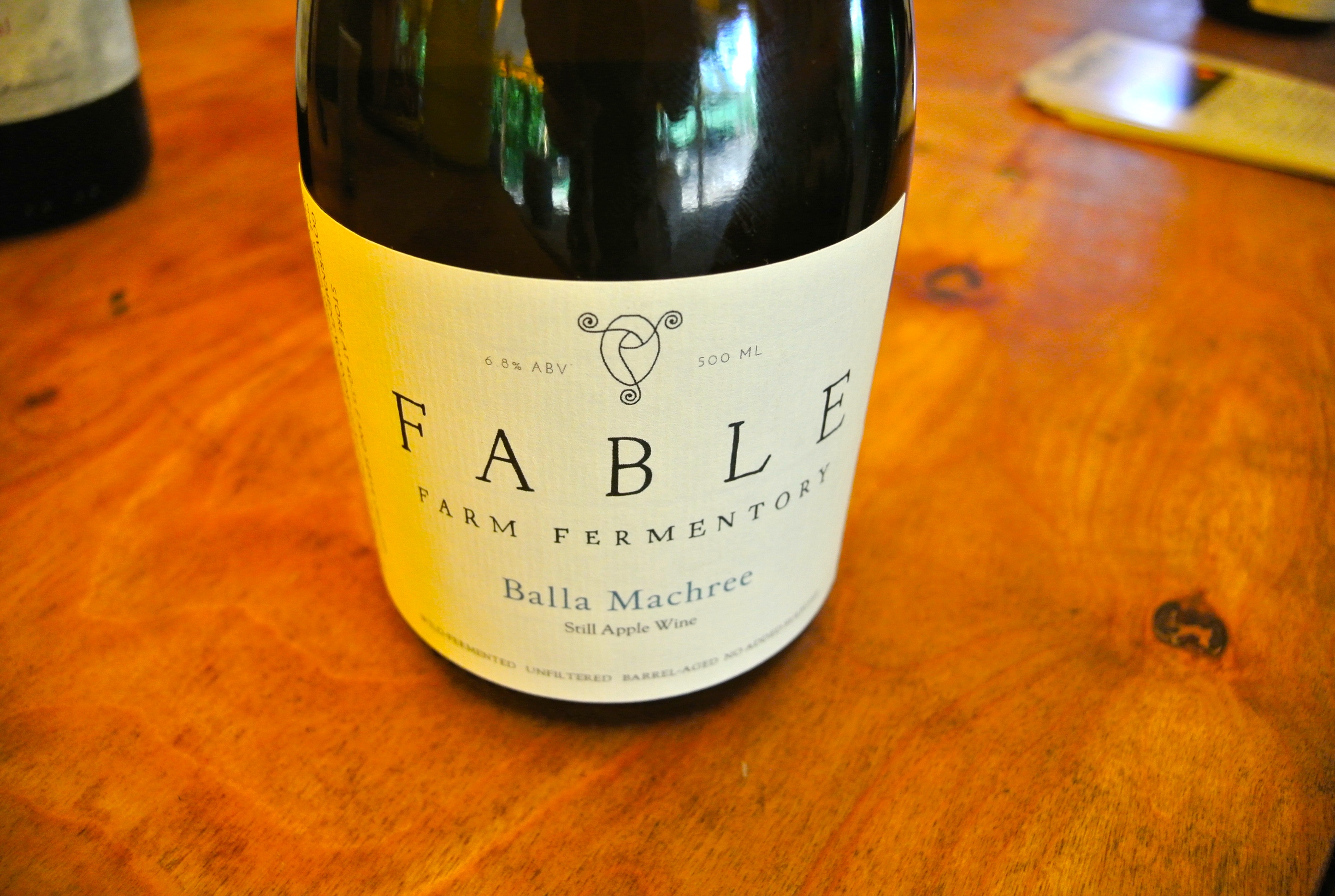
They get their apples (while their own estate orchards continue to take root) from wild, abandoned and cultivated trees found throughout their farm and neighbouring fields, forests, backyards and orchards. Yes, they forage for apples, what they call “gleaning” and climb trees in their bare feet and shake those suckers to the ground to begin the journey of making ciders in a range of zany styles that are closer to wine than cider.
Everything is wild fermented and after fermenting the ciders dry they are sent to the cave “to cure and mature through a species succession of microorganisms in both barrel and bottle,” according to the website.
“Ciders that are alive mature into an extremely diverse continuum of flavours and will evolve from year to year. Our supply of cider is limited by the purity and phenomenon of the farm and seasons.”
To these guys, cider is a spiritual and other worldly experience and their method of making them, as pure and natural as possible, just might have some beneficial health benefits.
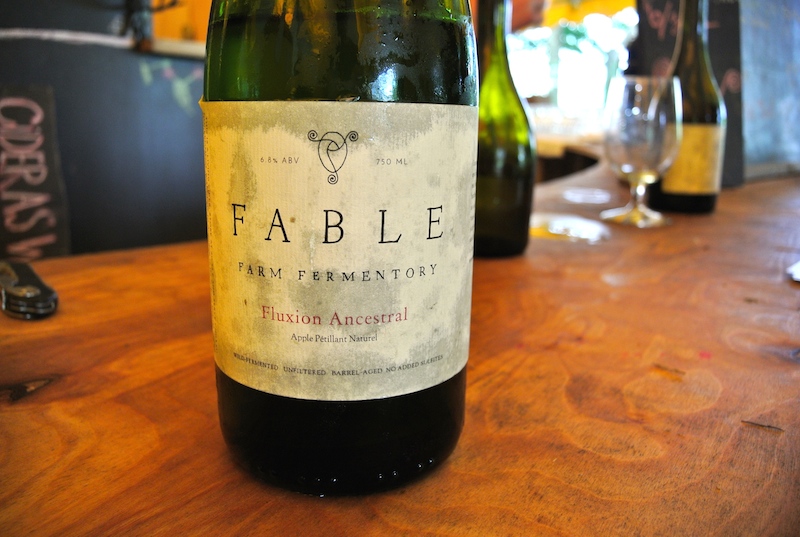
“Our cider as wine is not filtered, pasteurized, or made with the addition of sulphites. With an average alcohol content of 6-7%, we hypothesize that a certain population of beneficial microbes may survive, resulting in a finished wine that is alive. For those who like to enjoy an alcoholic beverage on a regular basis, this could potentially assist in fortifying one’s gut ecologies. And because we allow more of the apple pomace to enter into our fermentation vessels and do not filter, a greater percentage of phytonutrients is absorbed into our wines.”
Again, not entirely sure what that means, but trying the ciders at both the fermentory and later at the Beverage Market, they are simply killer ciders and not being duplicated anywhere (that I know of).
To wit:
The 2013 Fluxion Ancestral (33 cases made), a “pétillant apple wine,” that’s aged in barrels and bottled with a slight carbonation. It’s a field and cellar blend of wild cider apples harvested in late autumn of 2013. “Enjoy with feasts and merrymaking.”
To wit (Part II):
2013 Rosary, a black currant-apple pétillant naturel cider, a dry, burnt-orange coloured currant-apple wine. Just the tail end of fermentation was allowed to finish in bottle, producing a slight sparkle that could vary from bottle to bottle.
To quote:
“In 2013 we had quite the motley crew of carboys filled with cider, representing almost every pressing of a season that lasts from August through December. The carboys were blended and set to age in an elder bourbon barrel for over a year. A month before bottling, whole blackcurrants were steeped directly in the barrel, providing an extra dose of sugar and phytonutrients that merged with the aging cider.”
I leave you with one more quote from the Brothers Fable:
“Drink cider with respect, and the spirit will uplift the heart.”
Truth.
Up and down hill and dale, through the curvy, twisting Vermont countryside, to the Beverage Market we ventured.
Waiting for us was a crush of Vermont goodness spread out for us to taste and enjoy.
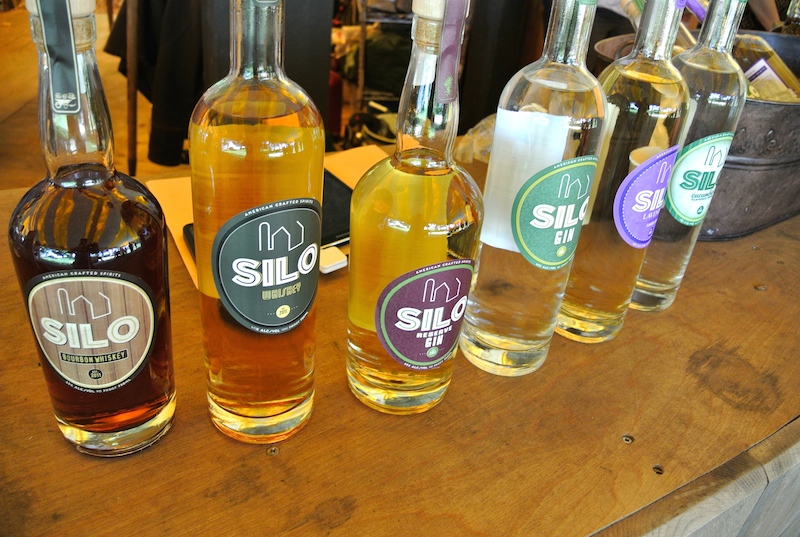
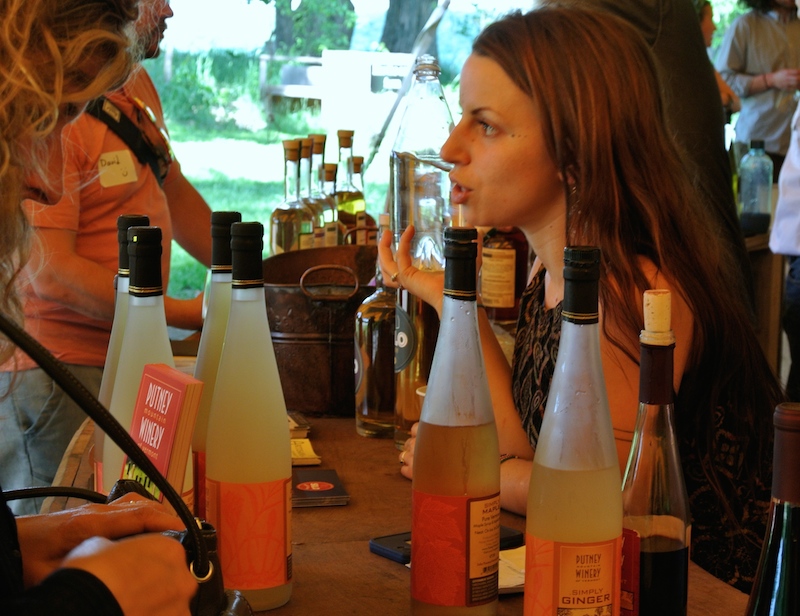
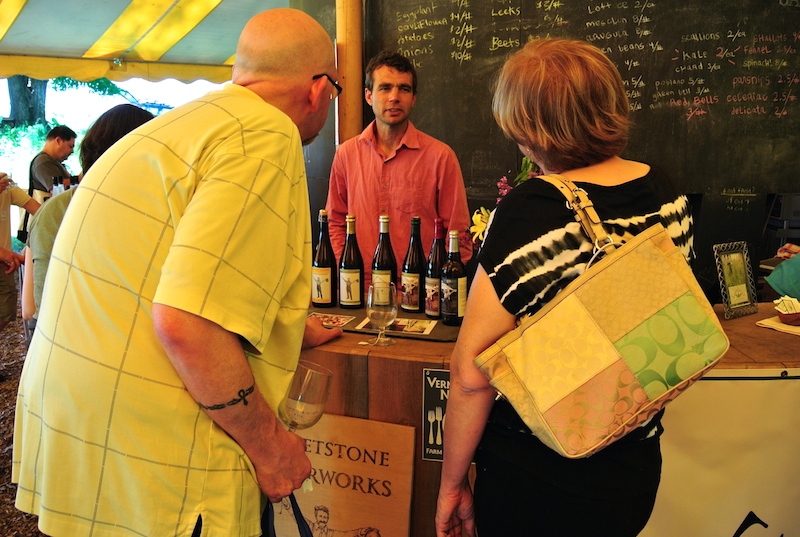
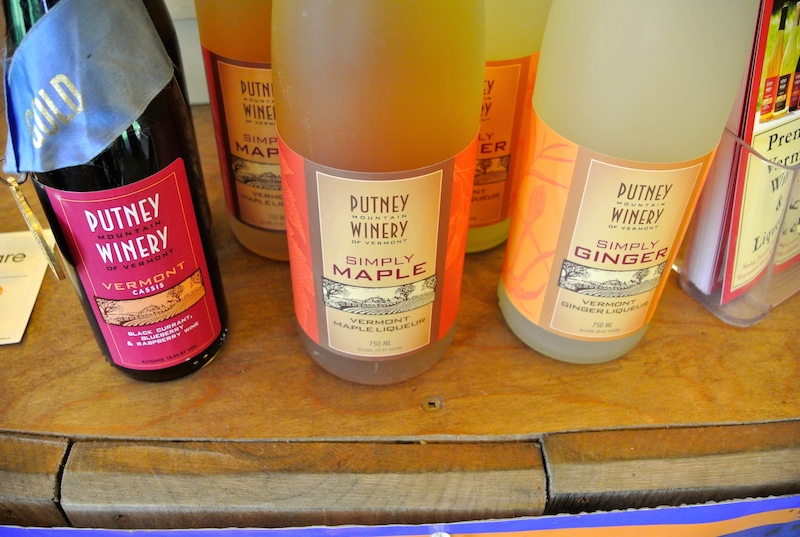
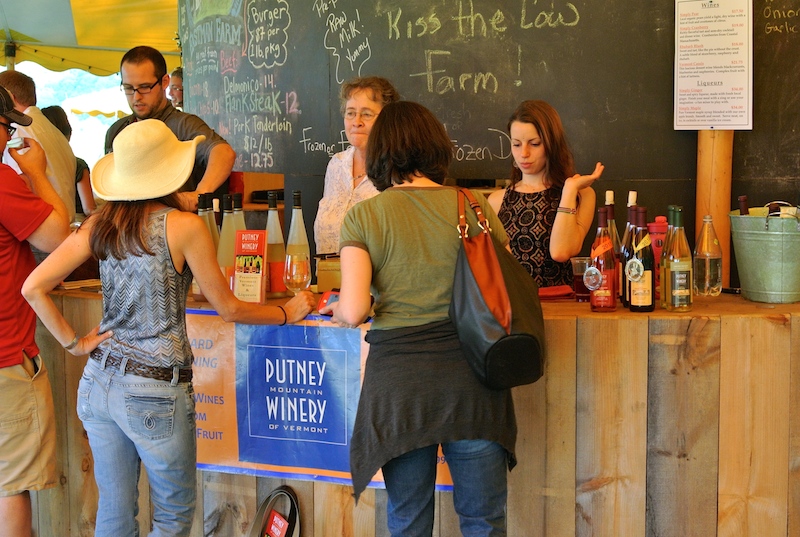
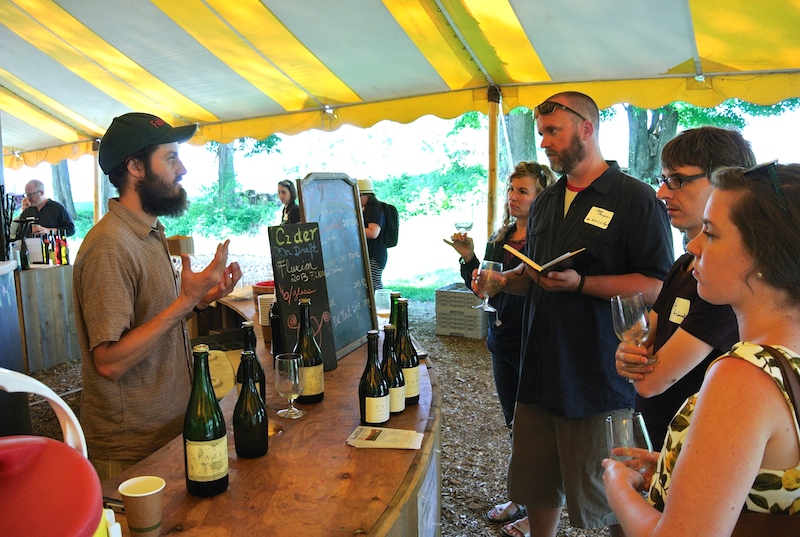
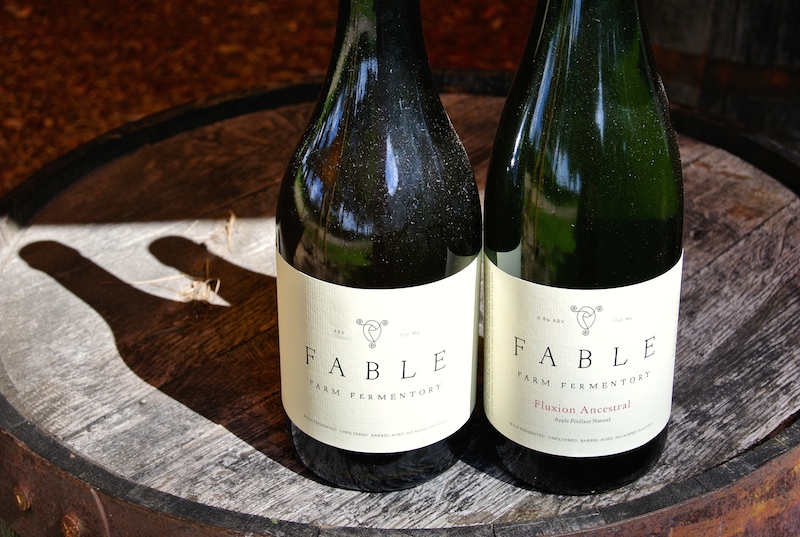
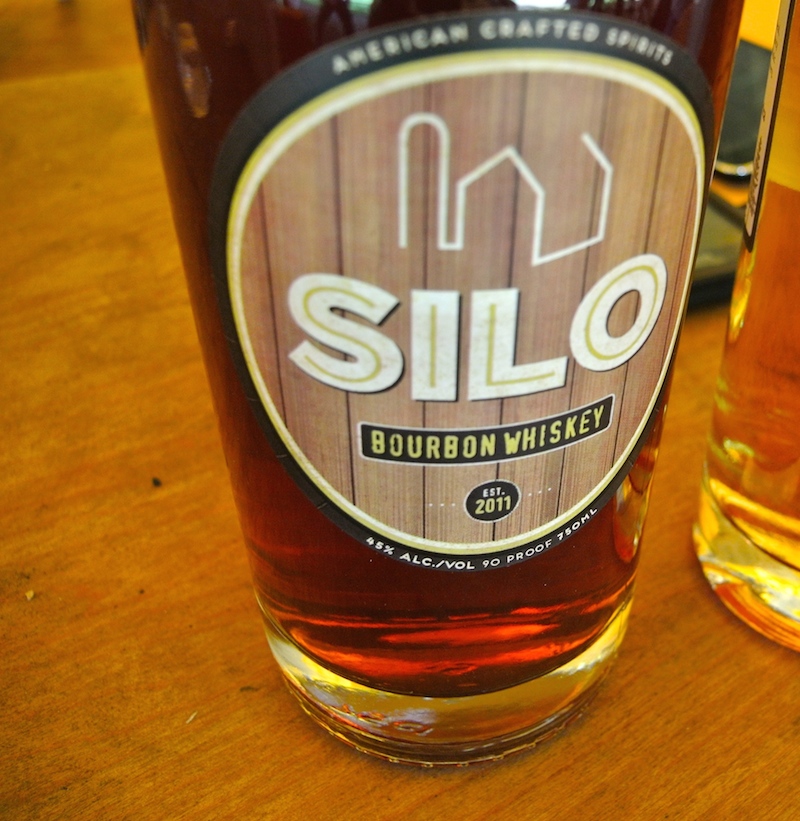
Wine, cider, beer, bourbon, gin, ice cider, fruit wines and pulled pork and beef tacos.
The drink stations were spread out in a circle as tastecampers made their way from booth to booth.
It was a taste of Vermont: Whetstone CiderWorks, SILO Distillery, Hermit Thrush Brewery and Brattle Beer, Fernleigh Cellars, Fresh Tracks Farm, Putney Mountain Winery, North Branch Vineyards, Upper Pass Brewery, Thistle Hill Farm Cheese.
Next stop: The Prohibition Pig for a TasteCamp community dinner on the patio with a feast of BBQ pulled pork, mac and cheese (crunchy top, creamy white Vermont cheddar centre, all gooey goodness), slaws and salads and artisan cheeses and topped off with a fruit crisp for dessert.
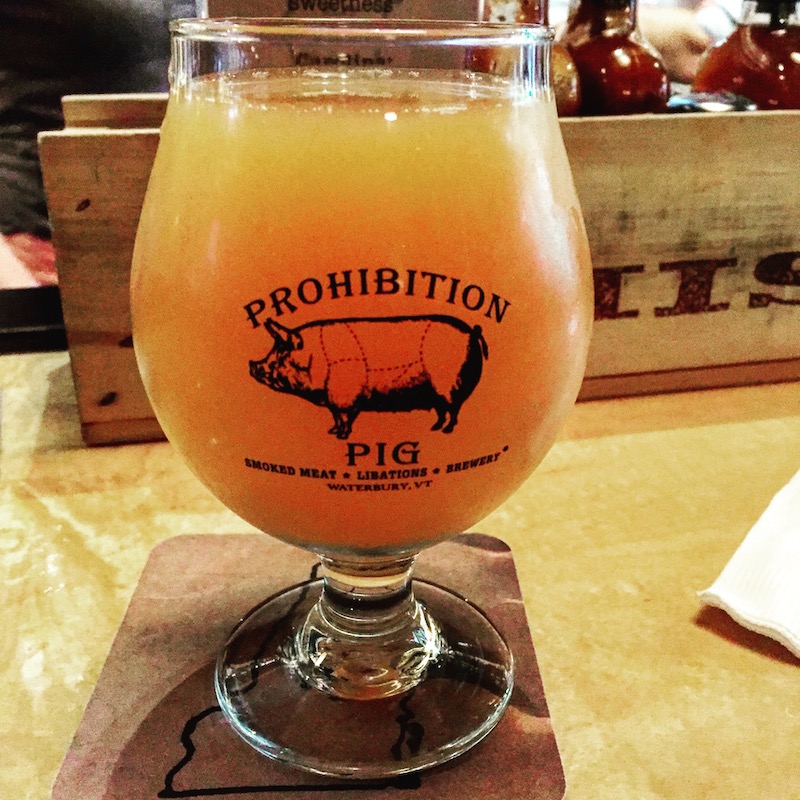
We sampled Pro Pig’s very own beers and sipped through a wide selection of friends’ craft beers such as Hill Farmstead and Lawson’s. I threw in a couple of Vermont ciders, just because I could. And I liked them.
Day Two (a vine affair)
This was bus day (thank goodness Shawn’s navigating services were no longer required) and blurry-eyed but bushy tailed we clamoured onto our ride at 8:45 a.m. where a healthy dose of Cabot Cheese and Vermont Smoke and Cure meats were waiting to fuel our journey.
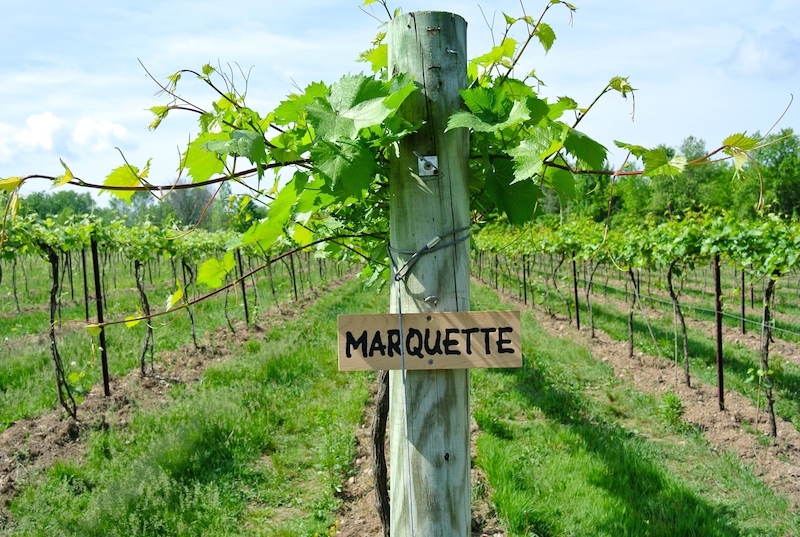
Our destination was Shelburne Vineyard, really a pioneer in Vermont winemaking and a snapshot of what can be achieved with grit and determination in a hostile wine-growing environment that is unfriendly to growing traditional vinifera grape varieties.
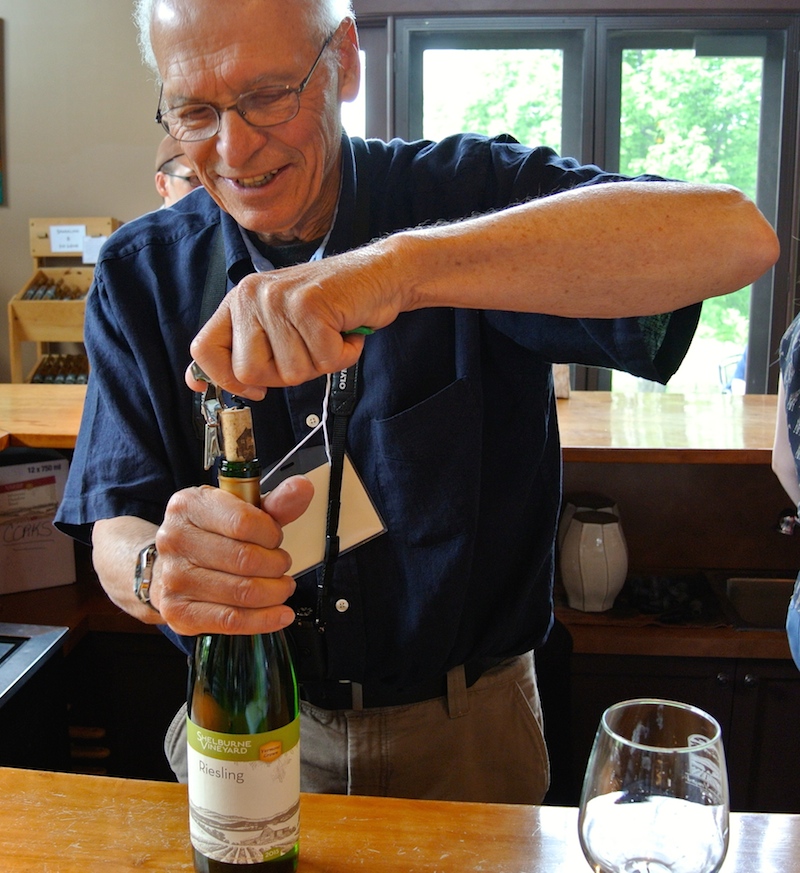
Founder/owner Ken Albert (above) had a vision 35 years ago that it could be possible to make commercial wine in Vermont. He planted (and replanted) vines on land he leased from Shelburne farms and experimented with different grapes. The star grape that would emerge from his research ended up being the new cold-hardy Minnesotan hybrid Marquette, which was released as the first commercial wine at Shelburne in 2000.
From the success of that first wine, Albert made the decision to purchase the land that is now their flagship site. Their LEED-designed winery, opened in Feb 2008 surrounded by Marquette vines that now welcomes the public seven days a week. The operation now includes of 17 acres of grapes, mostly the super-hardy Minnesota hybrids, with a small planting of Riesling and Vidal Blanc.
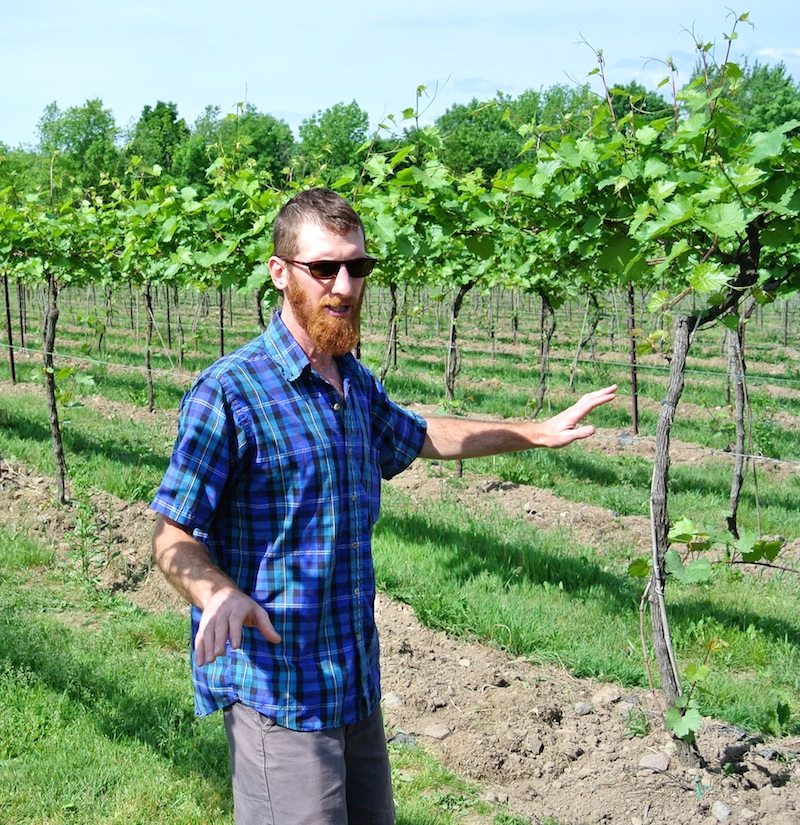
The cool thing about our visit to Shelburne was the conviction Albert, his partners and winemaker Ethan Joseph have for a “Vermont” solution to building a fledgling industry. There is absolutely no question what grapes they are hitching their star to and how they are going to build the industry.
For such a young wine industry, their “identity” is already established, a major hurdle already out of the way. At the few wineries we visited, there was a sense that grapes such as Marquette, La Crescent, Frontenac Gris, Louise Swenson, Frontenac Blanc, and Frontenac, all grown in a responsible, sustainable way, are going to drive the industry.
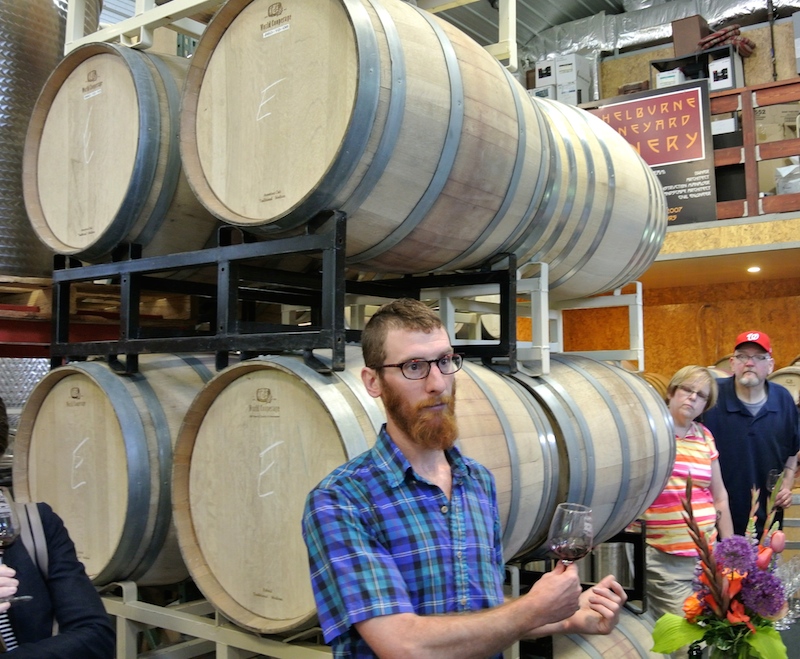
That’s not to say there won’t continue to be experimentation, even with vinifera. I tried the Riesling with Albert in the tasting room just before we boarded our bus for the next phase of our journey. The 2014 vintage was a tad on the sweet side, but the 2015, made much drier, was spectacular, all citrus and mineral with notes of pear and apple. It was, for me, a style somewhere between Finger Lakes and Niagara. The challenge is finding the right place to plant it so the brutal winter doesn’t kill it off every year.
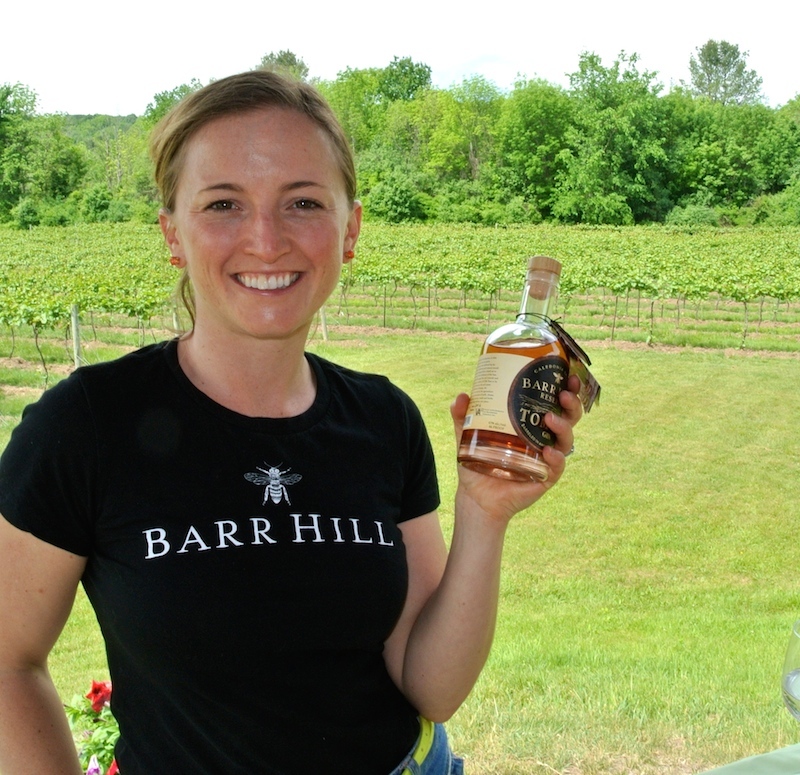
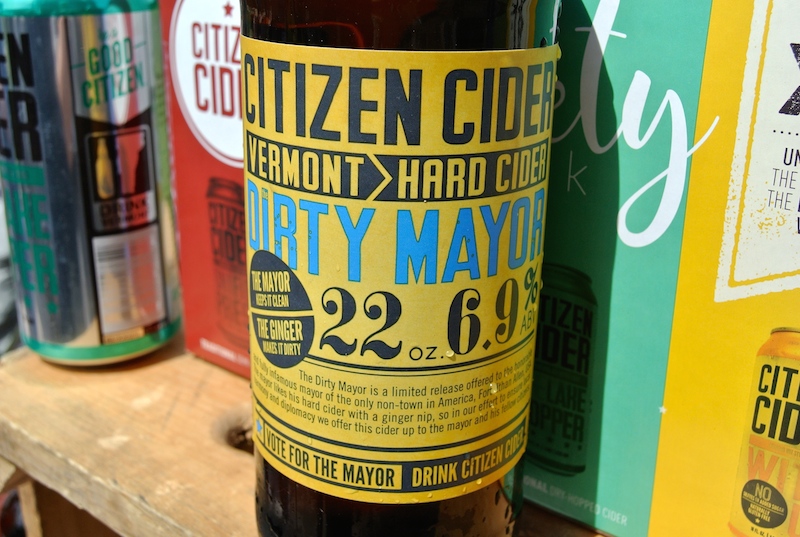
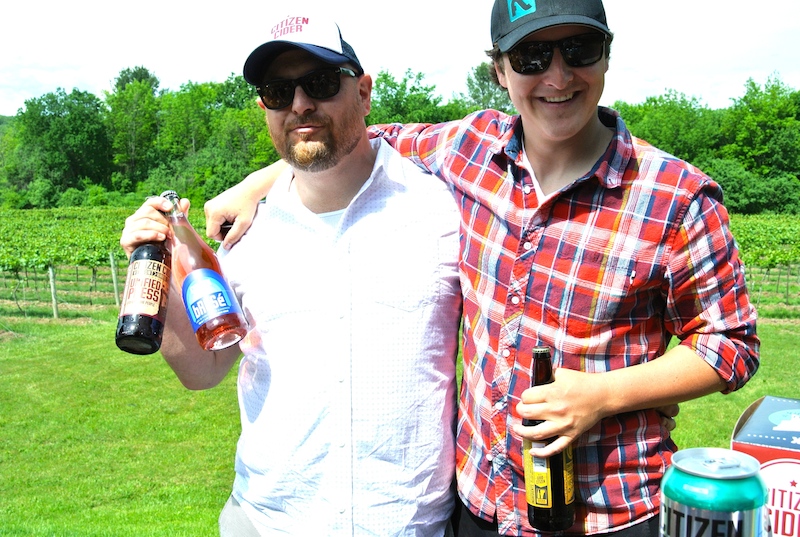
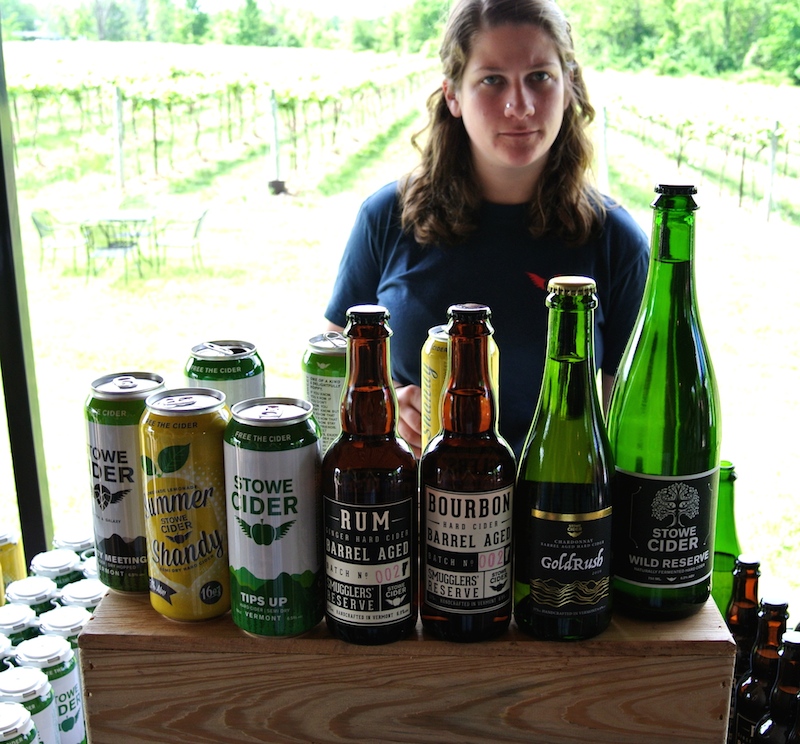
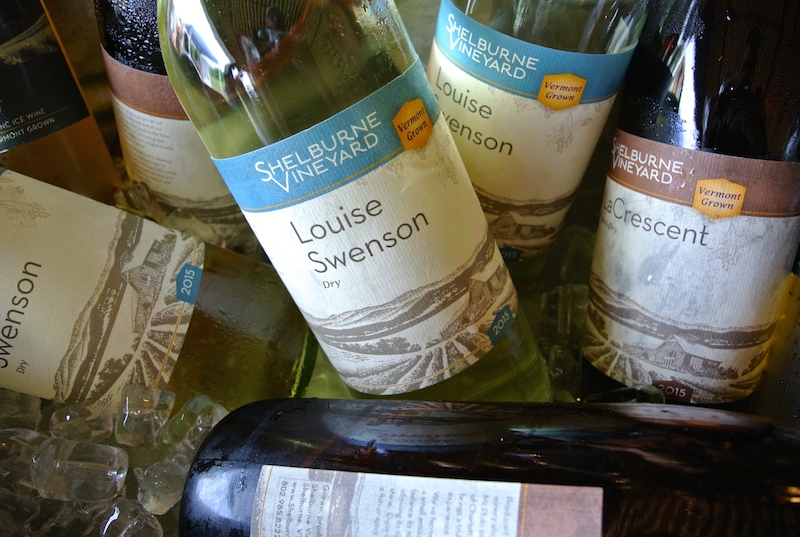
Before we left, we were treated to another round of beverage tasting that included drinks from Smugglers Notch Distillery, Boyden Valley Winery, East Shore Vineyard, Caledonia Spirits, Stowe Cider, Citizen Cider, and Snow Farm Vineyard.
Another bus ride took us to Lincoln Peak Vineyard in Middlebury, Vt. The story of owner Chris Granstrom and his family’s journey from apple tree farmer to strawberry farmers to full-fledged grape winery is inspiring.
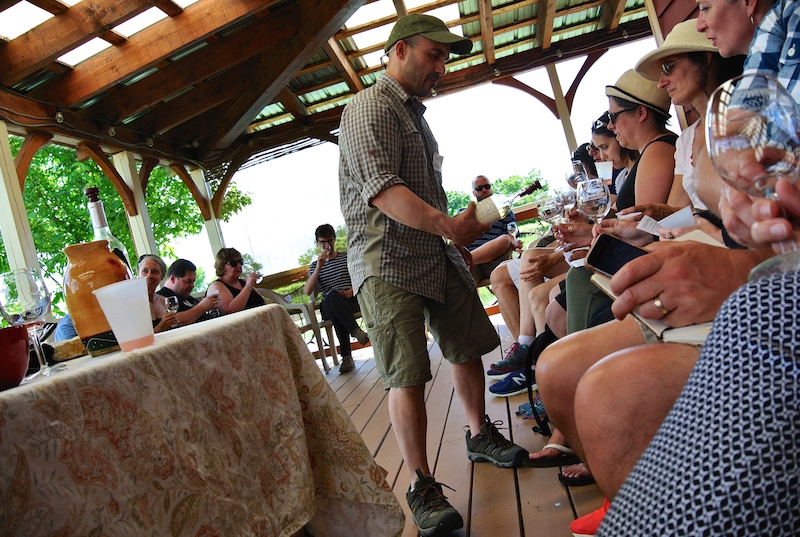
For Granstrom, grape growing all started in 2001 with a shoe box full of grapevine cuttings from a fellow in Minnesota (who shall remain anonymous).
“I had heard about these new, winter-hardy grape varieties and I sent him an email. I stuck the cuttings in the ground; they grew. Within a few years, grapes took over our strawberry fields, and now we find ourselves one of the largest grape producers in the state of Vermont,” he says.
The first batch of commercial wine was made only in 2006 while production has now grown to 25,000 bottles of wine a year.
“Some folks may have thought we were crazy to start an enterprise like this, but with some good land, careful farming techniques, a great farm crew, and support from our neighbours, it’s all working out. We like to think that we’re helping to turn a new page in Vermont’s long and varied agricultural history.”
The wines we tasted, as Granstrom poured for us one after the other on a stinkin’ hot day as we sat in a circle on the gorgeous deck of the tasting room, were delicious. His Marquette was a winner; a lovely, personable red that wasn’t overdone with oak. His blended and varietal whites all had freshening acidity and a range of fruit flavours that were appealing and well made. It was an impressive portfolio of wines.
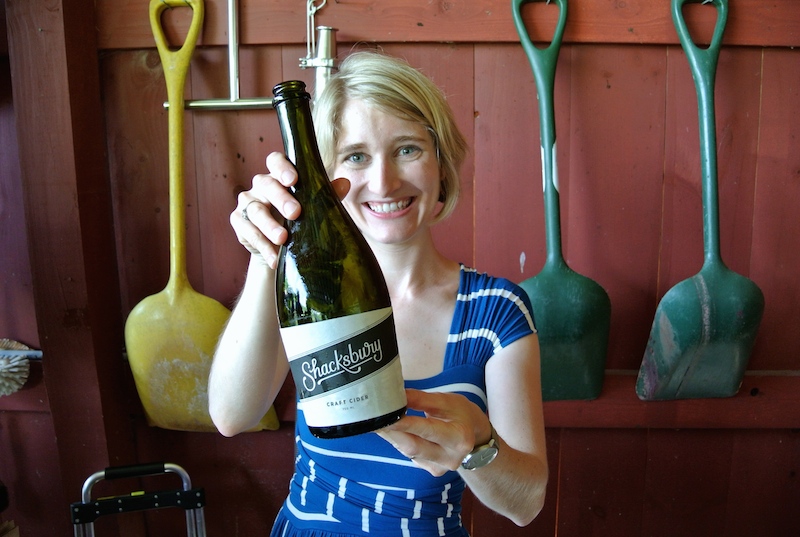
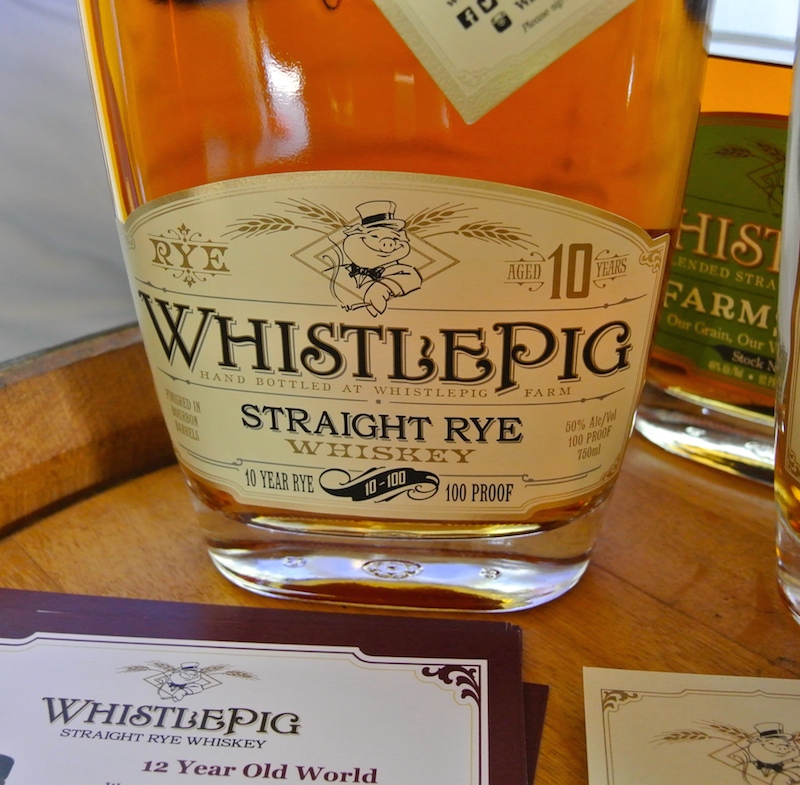
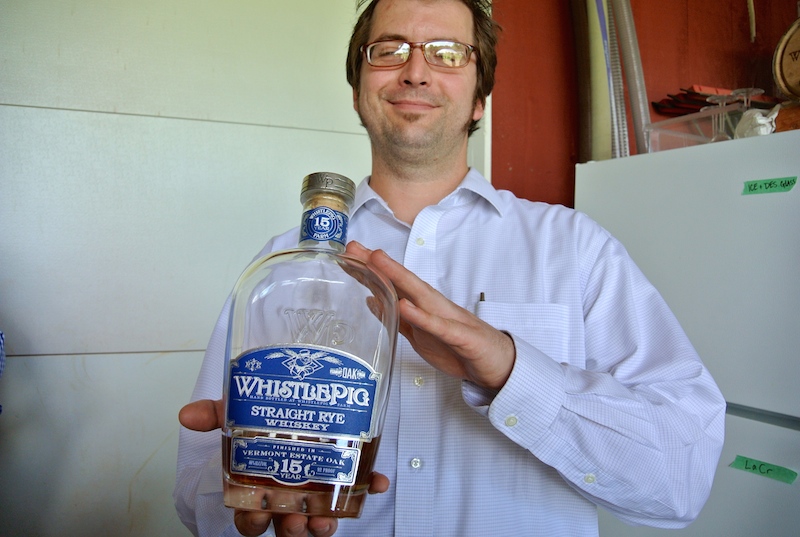
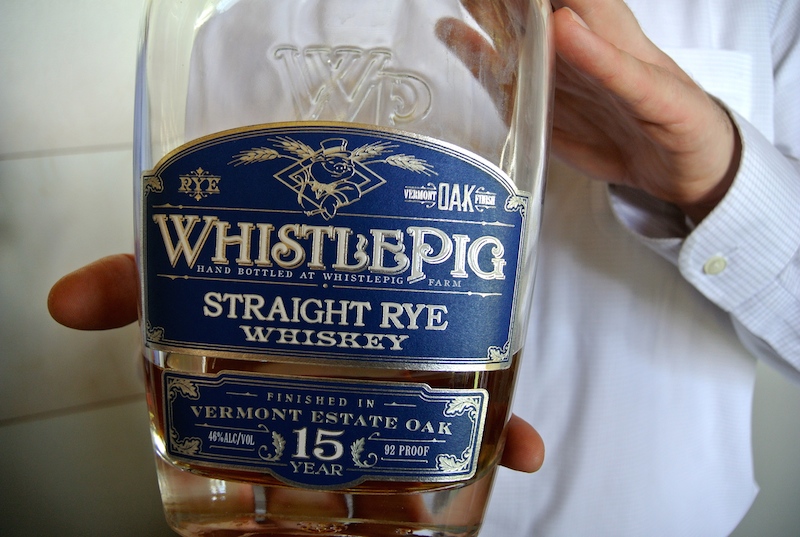
After a quick and delicious farm-style lunch, we were then retreated to the winery to taste a range of beverages from Addison County and Central Vermont producers including: Shacksbury Cider, Huntington River Vineyard, Appalachian Gap Distillery, WhistlePig, Champlain Orchards, Foley Brothers Brewing, Stonecutter Spirits, Eden Specialty Ciders, and Windfall Orchards.
The Big Finish (really big)
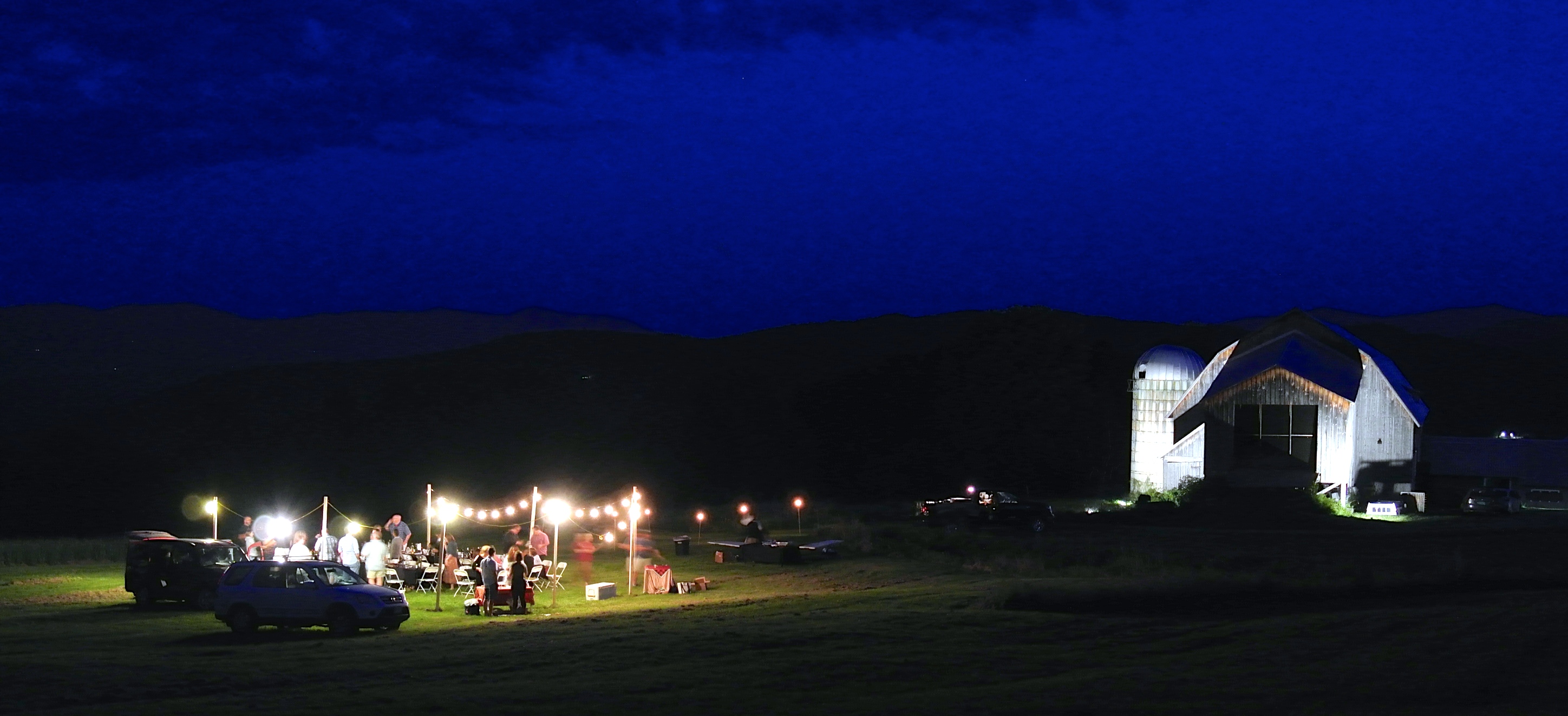
After full day of noshing, spitting, swirling, sniffing (maybe not in that order), it was time to freshen up, put on our best Vermont finery (which means clean T-shirt and shorts) and partake in a TasteCamp tradition — the Bring Your Own Bottle (in this case BOTTLES, lots and lots of BOTTLES) wrap-up dinner.
Vermont’s TasteCamp organizers, led by Todd Trzaskos, author of Wines of Vermont: A History of Pioneer Fermentation, Thompson and Charest, had a special treat waiting for us.
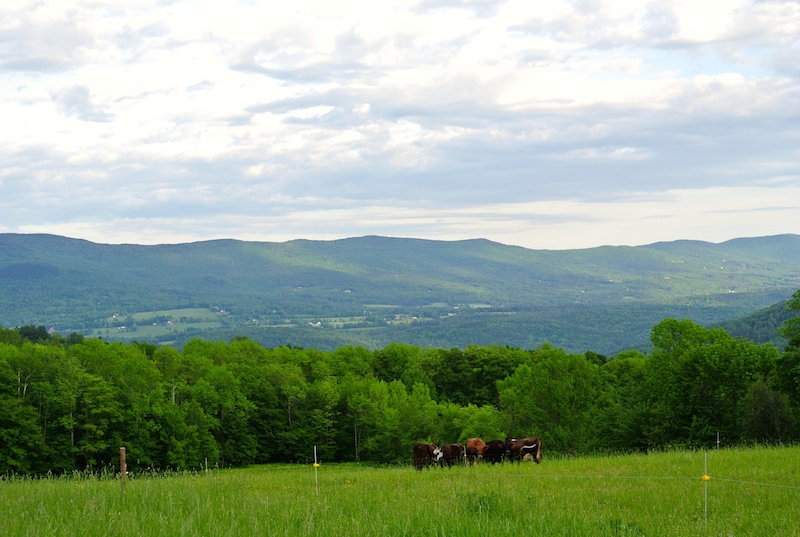
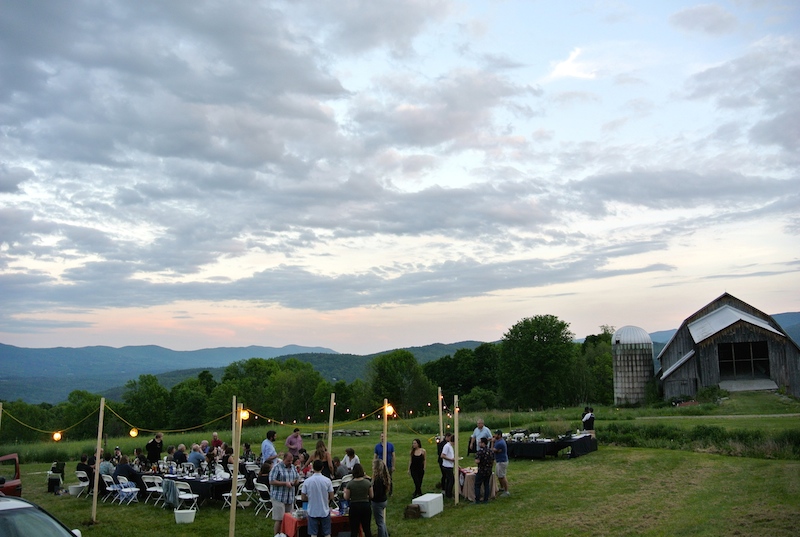
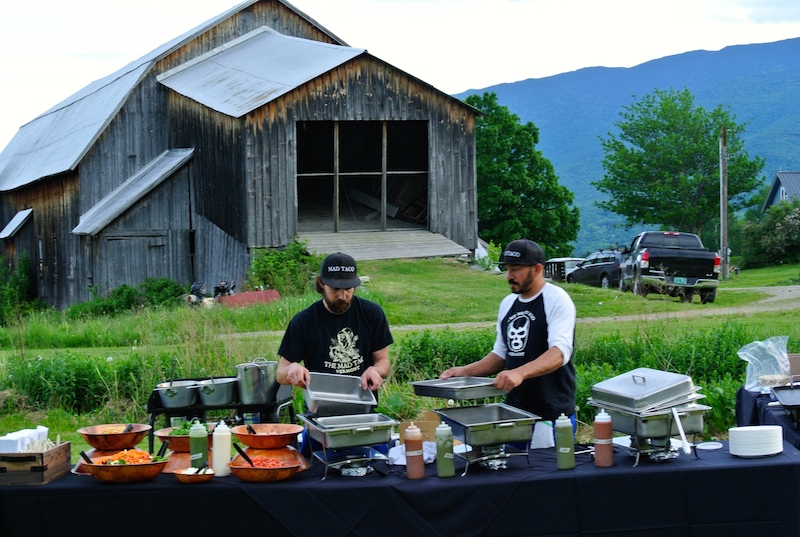
As we arrived at our destination, the Ploughgate Creamery at Bragg Farm in Fayston, Vt., the impact on us all was immediate. Stunning vistas of glorious green mountains, some carved gently with wicked ski trails, was our backdrop. Tables were set up outside in the middle of a giant field, dairy cows grazing happily in an adjoining field. A spectacular barn, the creamery, was in the background and glowed from ambient light once the sun had set.
Ploughgate Creamery’s cultured butter is made from fresh Vermont cream sourced from the St. Albans Coop. The cream is cultured for 48 hours before being churned, giving the butter a distinct tangy, nutty, and slightly cheesy flavor.
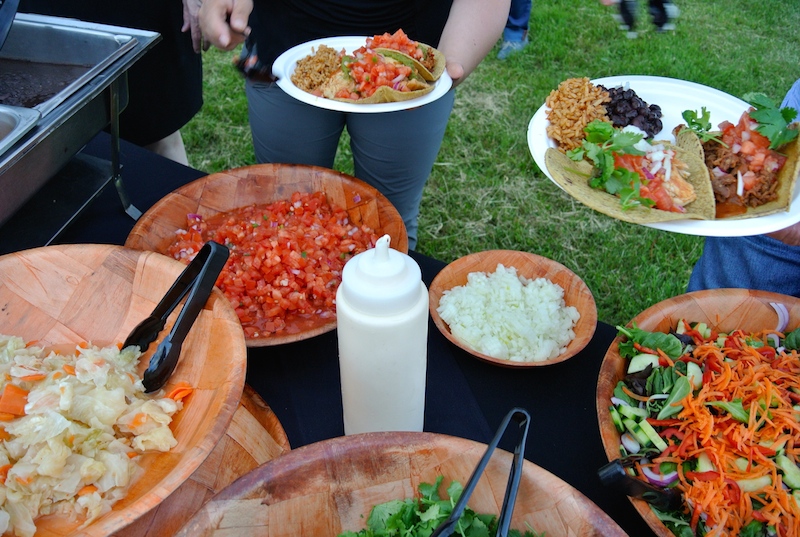
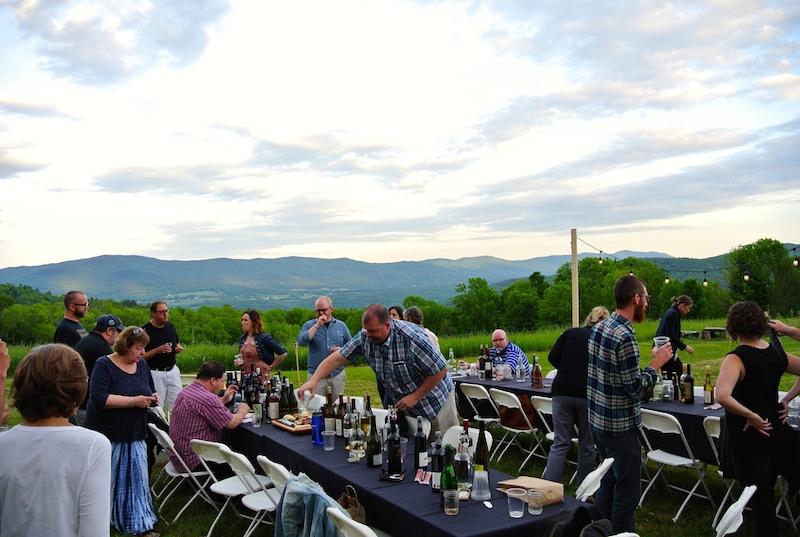
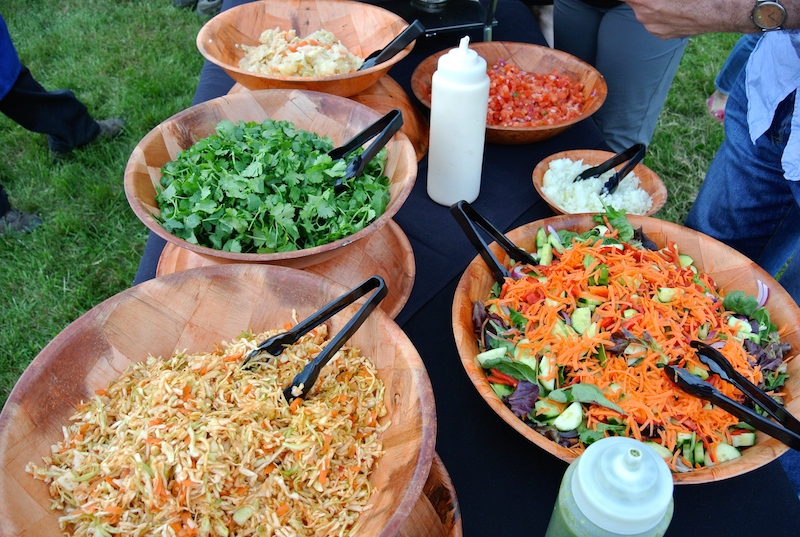
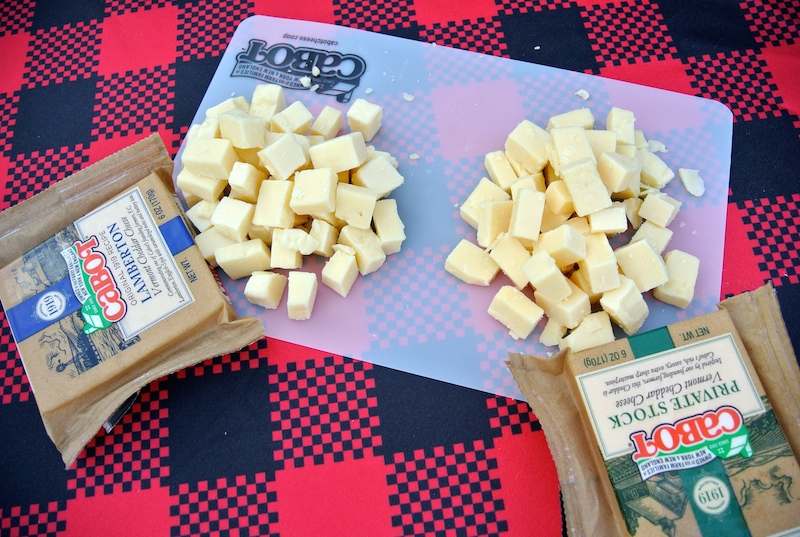
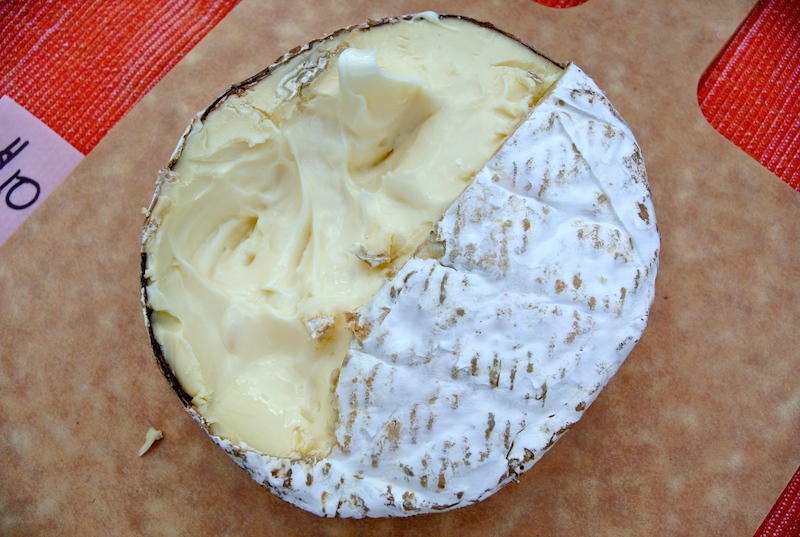
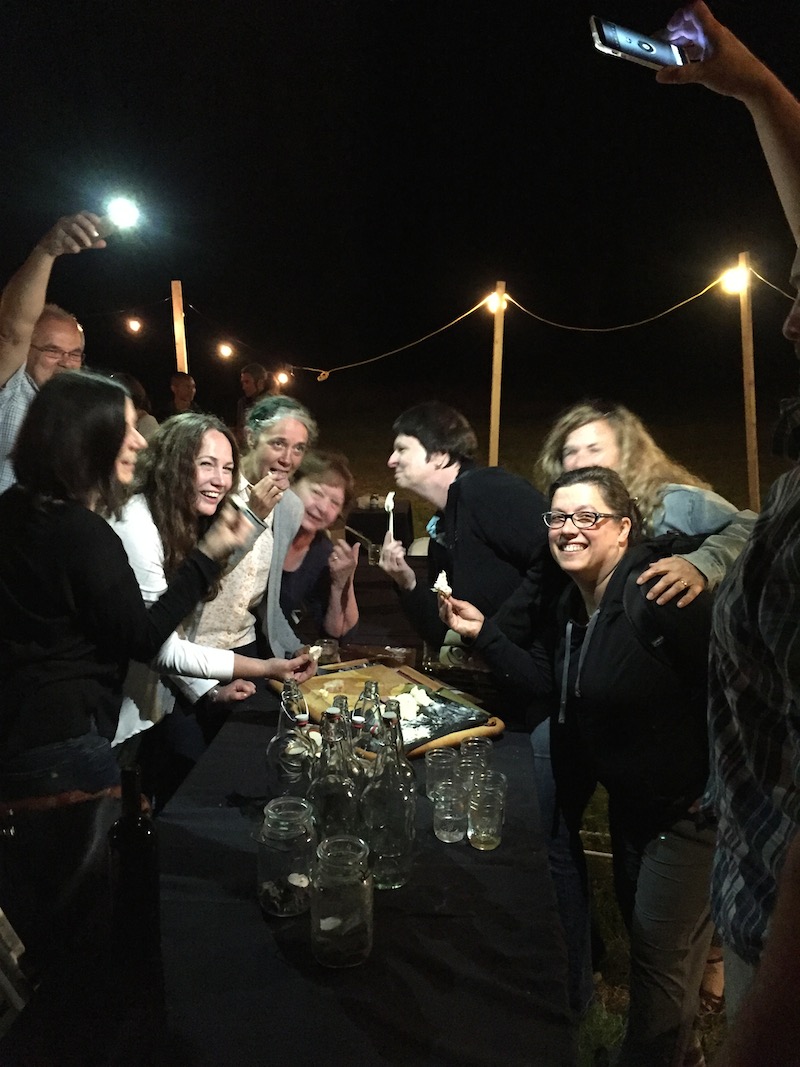
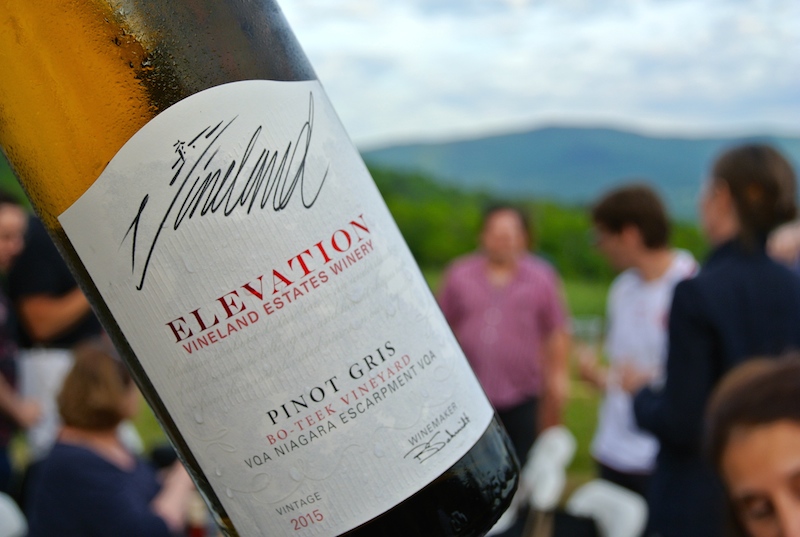
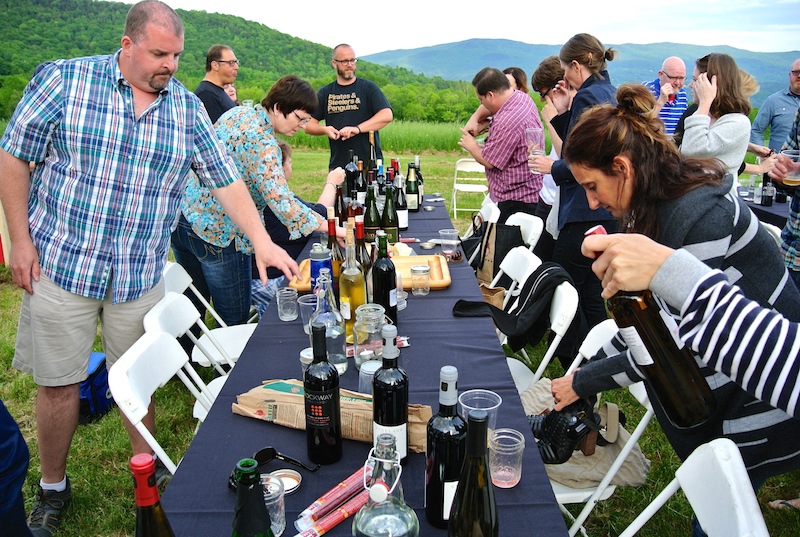
The butter is made here at the historic Bragg Farm, a turn of the century (that’s 20th century!) farm that was put into the Vermont Land Trust with the purpose of keeping the land in agriculture. Marisa Mauro, butter maker and entrepreneur behind Ploughgate, won the right to purchase this land through a competition in which young farmers submitted agricultural business plans for the land. Mauro’s business plan for her butter business and creamery won out over 13 applicants, and she began producing butter there in 2014.
Butter, exquisite cheese from Cabot Cheese Cooperative and Jasper Hill Farm and a feast of BBQ pulled pork and beef tacos was supplemented by a dizzying array of wine and spirits from 35 bloggers who stuffed their cars and suitcases with goodies from home to share with old friends on this glorious last night in Vermont.
Bravo, Vermont, bravo.


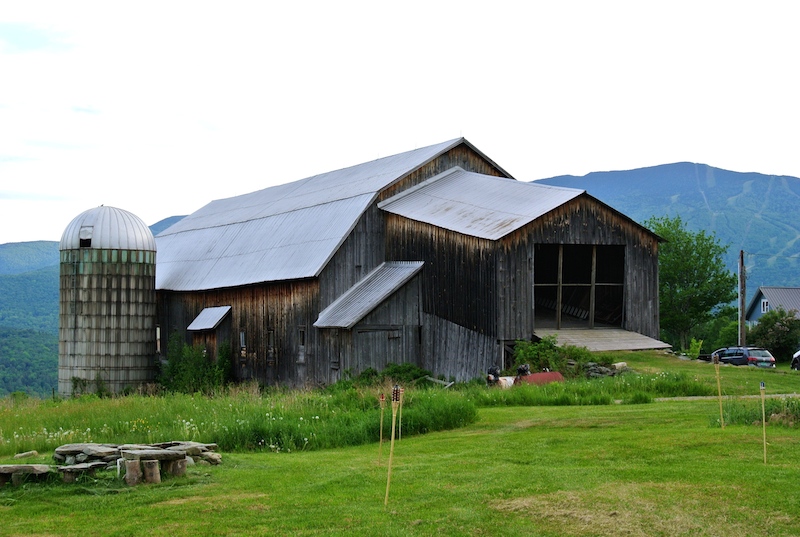



Comment here